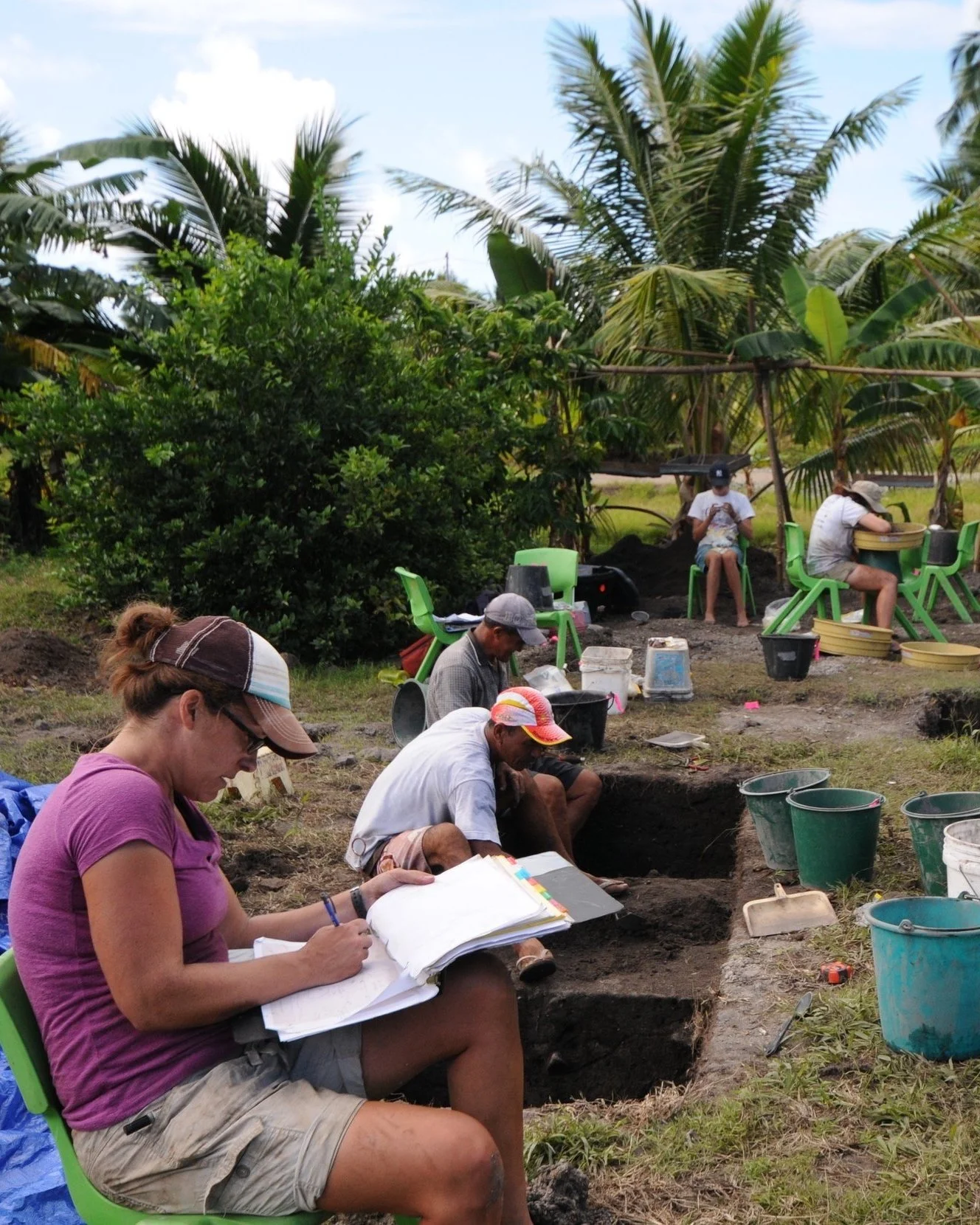Projects
Household Archaeology and Monumental Architecture in the Society Islands (1999-present)
This project is the foundation of my current research programs in French Polynesia. This project began when I first completed survey and excavations of pre-contact Ma’ohi house sites in the ʻOpunohu Valley, Moʻorea Island, Society Islands in 1999-2001. Since that time I have expanded my household/monumental architecture based research in the Society Islands to coastal sites around Mo’orea, in addition to those on Maupiti and in the Fa’aroa Valley (Rai’atea). This research explores the development of social complexity among Maʻohi chiefdoms, seeking to define the socio-political and economic structures through which these societies were transformed into one of Polynesia’s most stratified and economically specialized chiefdoms. Methodologically, this research focuses on the materialization of social relations of kinship at multiple scales: the micro-level of residences, the macro-level of monumental architecture and its spatial distribution, and an integration of the two data sets to model community-level social relations. This project is carried out in collaboration with the Tahitian community. I am currently seeking grant funding to complete LIDAR mapping and GIS viewshed analysis in the ‘Opunohu and Fa’aroa Valleys, as a means of comparing and constrasting elite secondary centers.
Religion, Ideology, and Social Complexity in French Polynesia (2017-present)
This new project, launched in 2021, aims to compare and contrast the influence of the late pre-contact ‘Oro war cult on Society Island and Austral Island chiefdoms. Archaeological survey, excavation and dating of monumental temple sites, and geochemical analysis of stone adzes are proposed. The goal is to refine our knowledge about the timing of the ‘Oro war cult’s development in the Society Islands and the extent to which this new religion spurred social change in the Society Islands and beyond. This project began with my first visits to Rurutu in 2017-2018. The Rurutuan community is excited about our planned archaeological projects on their island; excavations are scheduled to start in December of 2021. Another component of this project entails redating and reanalyzing archived archaeological collections from prior excavations on Rurutu in the 1980s.
Human-Environment Interactions in Central Eastern Polynesia (2010-present)
Over the course of the last 10 years I have collaborated on French Polynesian projects with a multidisciplinary human-environmental ecodynamics focus. The project compares and contrasts three archipelagoes in French Polynesia, the Gambiers, the Australs, and the Societies, applying the concept of islands as model systems. The goal is to understand long-term, dynamic interactions between island populations and island environments which allowed some socioecosystems to develop substantial resilience, and led others into states of high instability and vulnerability. We use archaeological and paleoecological data to understand interactions among anthropogenic landscape change and shifts in settlement patterns, agricultural infrastructure, production, and ideological control, both how these variables influenced emerging social complexity, and how they effected long term adaptive cycles in island socioecosystems. New offshoots of this project include development of human centered use webs and use of social network modeling to examine themes of resilience and sustainability, in addition to excavation of rockshelters on Rurutu (Austral Islands). Many aspects of this work are ongoing, including analysis of coastal marine faunal assemblages, human-use web analysis, and other forms of demographic modeling.
Settlement and Subsistence in Miloli'i Valley (Hawaiian Islands) During the Prehistoric-Historic Periods
In 2009 I initiated a program of archaeological research, outreach, and stewardship in collaboration with State Parks Hawaiʻi and the Na Pali Coast Ohana. The project investigates the long-term history of prehistoric settlement and subsistence in Miloliʻi Valley, found along the stunning, isolated, and rugged Na Pali coast, Kauaʻi. The archaeological research integrates inventory survey, mapping, and test excavation of house sites, agricultural terraces, and rockshelters spanning the prehistoric to historic periods. The goal is to investigate how Hawaiian communities adapted and flourished in this rugged hinterland, and to what extent socio-political shifts in this hinterland were connected to elite centers in other parts of the island. This project is carried out with extensive local Hawaiian community involvement in addition to educational outreach to local eco-tourism providers on the island. An ongoing research component provides stewardship for the archaeological sites and their surrounding environmental landscape, and aid to the State Park Service with the ongoing conservation of natural and cultural resources in Miloliʻi Valley.
Adze Production, Trade, and Exchange in Central Eastern Polynesia (Lab-Based)
This project addresses if the emergence of socio-political and economic complexity in chiefdoms result in increased technological specialization in the production of material goods, such as stone tools (adzes). A corollary question is whether persons of differential rank and status (e.g., commoners, elites) had varied access to adze production or the raw materials used in their fabrication, and if these relationships vary between highly complex chiefdom societies (e.g., Hawaii, Societies) and smaller scale "simple" chiefdom societies (e.g., Pitcairn). The project targets comparative analyses of stone tool assemblages from Polynesian archipelagoes of varying size, isolation, and social complexity: the Hawaiian Islands, the Society Islands, the Pitcairn group, Mangareva, Samoa, and the Austral Islands. Recent work has focused on develop a formal classification for Hawaiian adzes in collaboration with Tom Dye.



